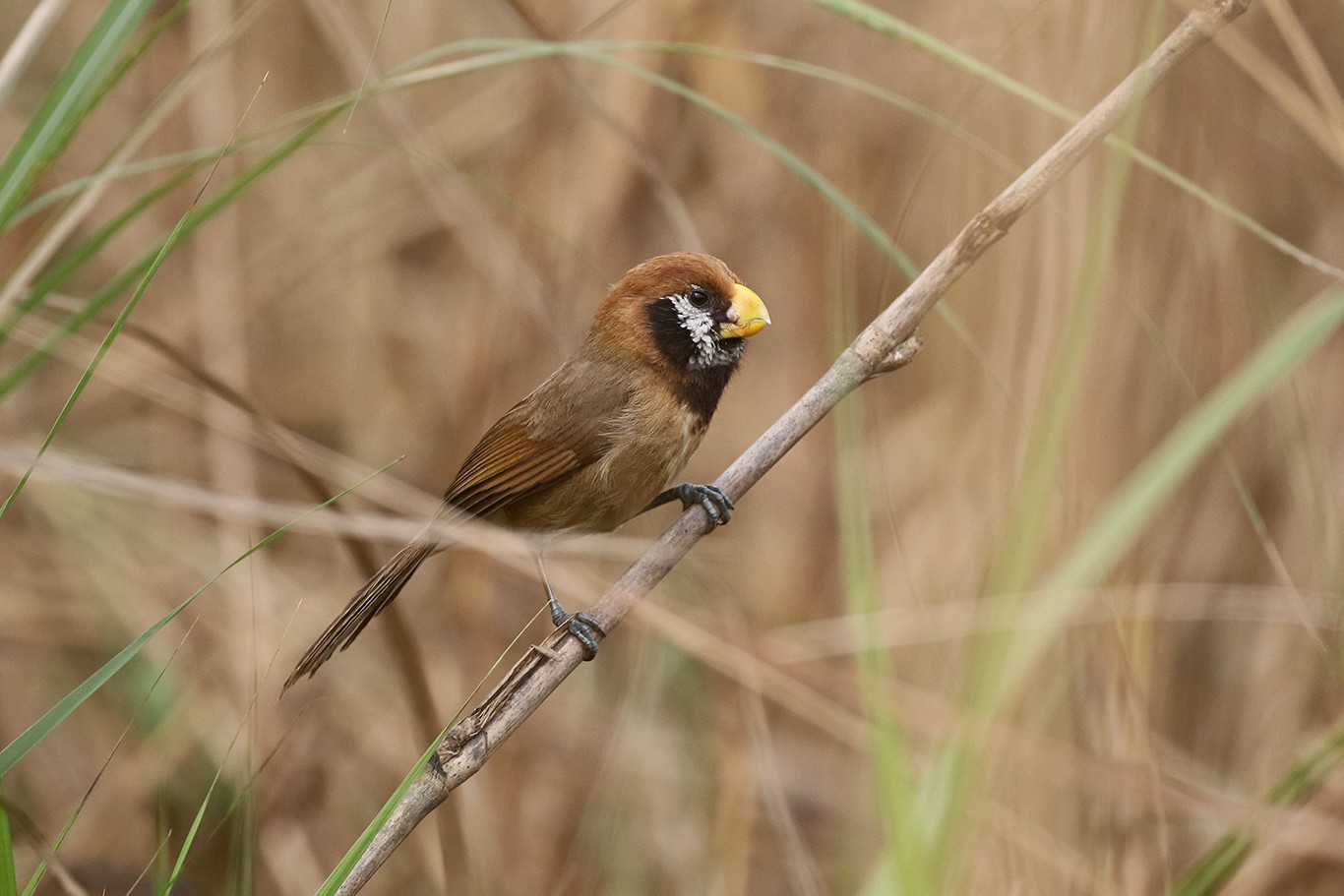Black-breasted Parrotbill
A species of Paradoxornis Parrotbills Scientific name : Paradoxornis flavirostris Genus : Paradoxornis Parrotbills
Black-breasted Parrotbill, A species of Paradoxornis Parrotbills
Botanical name: Paradoxornis flavirostris
Genus: Paradoxornis Parrotbills
Content
Description General Info
 Photo By Charley Hesse TROPICAL BIRDING
Photo By Charley Hesse TROPICAL BIRDING Description
The black-breasted parrotbill (Paradoxornis flavirostris) is a 19 cm long, large, thick-billed parrotbill with black patches on the head-sides and throat. Formerly considered a distinct family, the parrotbills are now placed with the typical warblers in the Sylviidae (Jønsson & Fjeldså 2006). The bird is more or less brown all over, with an extensive black area on upper breast and uniform rufous-buff remainder of underparts. The similar spot-breasted parrotbill, a close relative, has arrow-shaped spotting on breast and pale buff underparts. The voice is a gruff howh, jeehw or jahw, the song a rhythmic series, aw jahw jahw jahw and uhwi uhwi uhwi uhwi. Alternatively, a higher-pitched wi chi'chi'chi'chi'chi, wi yi'yi'yi'yi'yi; wi'uwi-uwi-uwi wi chu-chu-chu is given.(BLI 2006) Paradoxornis flavirostris is endemic to the Indian subcontinent and in modern times possibly the country of India, where it is known from the plains and foothills of the Brahmaputra valley in Arunachal Pradesh and Assam. Historically, it was also recorded in Bangladesh and possibly eastern Nepal. It used to be a fairly widespread and locally common species. There are, however, recent records from only three disjunct locations, one in Arunachal Pradesh and two in Assam (one in Manas National Park & another in Dibru-Saikhowa National Park). (BLI 2006) 
Size
21 cm
Nest Placement
Tree
Habitat
The black-breasted Parrotbill inhabits tall dense grasslands with vegetation such as elephant grass and reeds, often adjacent to water bodies. Its preferred environment includes expansive stretches of unburned grass over three meters tall. These habitats are typically wet grasslands and riverine islands that support large elephant grass growth. The black-breasted Parrotbill is also found in areas with longer grass interspersed in shorter grassland, avoiding heavily grazed or frequently burned areas. It often associates with similar species that share a preference for dense, tall grassland habitats.
Dite type
Granivorous
General Info
Feeding Habits
Bird food type

 Photo By Charley Hesse TROPICAL BIRDING
Photo By Charley Hesse TROPICAL BIRDING Scientific Classification
Phylum
Chordates Class
Birds Order
Perching birds Family
Sylvia babblers Genus
Paradoxornis Parrotbills Species
Black-breasted Parrotbill